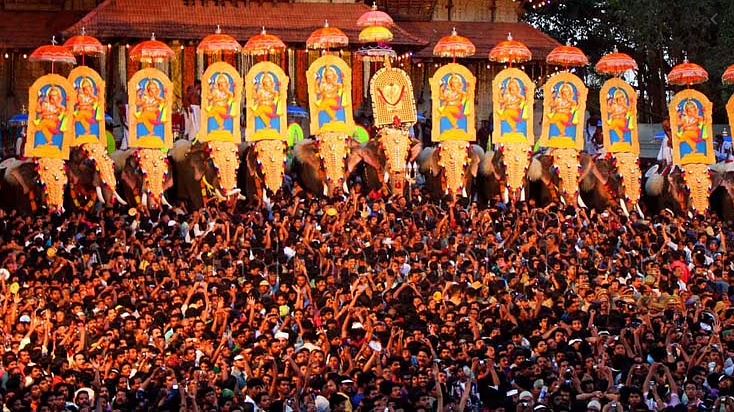Kerala, a land of cultural diversity, is a complete whole made up of a blending of various religions, communities, regional cultures and language variations. Kerala culture can be compared to a chain made of different coloured beads and the thread through which the beads are strung is the Malayalam language. The cultural variety of Kerala was created by its unique geographic features as it lies between the Arabian Sea and the Western Ghats. Rich in rain forests, its ancient trade relations with foreign lands, entry of immigrant communities during different periods, agricultural tradition, cuisine and its tradition of art – literature –science and all these make the land, Kerala.
Though Kerala had remained as a unique cultural zone from ancient times, it became politically united with the formation of the Kerala state. This land, which lay divided into the Travancore and Kochi kingdoms, and Malabar district in the Madras Presidency under the British rule, became a single state on November 1, 1956. Kerala is bordered by Tamil Nadu on its East and South; by Karnataka on its north and north-east; and by the Arabian Sea on its west. Lakshadweep, which is a union territory lying on the Arabian Sea and Mayyazhi, which is an enclave of Puthucherry state lying within Kerala are part of Kerala culture both in terms of language and culture.
Kerala’s cultural heritage is centuries old. The culture of Kerala is an amalgam of native art forms, language, literature, architectural style, music, festivals, cuisine, archaeological monuments, heritage centres and so on. There are many cultural institutions dedicated to protect these as well.
The artistic field of Kerala comprises ancient classical art, folk art as well as modern artistic forms like the cinema. The arts of Kerala can be divided generally into audio – visual arts, and also into classical art forms and folk art forms. Visual arts include stage art, sculpture, painting and cinema, which comprise both classical and folk forms. Music and instrumental music belong to audio arts. The musical culture of Kerala includes folk music (folk songs, ritual songs, Thiruvathira songs, Vanchipattu) and classical music comprising Carnatic music, Kathakali music and Sopana music. The traditional musical instruments of Kerala include among others Panchavadyam, Chendamelam, and Thayambaka.
Kerala has a distinctive architectural tradition. Places of worship and ancient houses are examples of that architectural style that gave importance to simplicity. They were built according to “Thachushastra.” You can also see a distinct temple architectural style. Thantra Samuchayam, Shilpachandrika and Manushyalaya Chandrika are some of the famous books on the science of architecture.
Malayalam cinema field is one of the strongest in India. Kerala has contributed a number of film personalities who are well-known worldwide. The first cinema show in Kerala was held in Kozhikode in the year 1906. Mobile cinema screening practice gave way to permanent cinema halls by the third decade of the twentieth century.
In the early days, usually Tamil pictures were shown. The first Malayalam cinema is Vigatha Kumaran, a silent movie by J. C. Daniel who deserves the title of the Father of Malayalam Cinema. In 1933, the second movie Marthanda Varma also was screened. The first talking movie in Malayalam is Balan (1938). The first cinema studio Udaya was established in Alappuzha in the year 1948.
The main food of the people of Kerala is rice. The typical Kerala cuisine comprises cooked rice along with curries of vegetables, fish, meat and eggs. Rice is also used to make a whole variety of other dishes. Rather than native Kerala food, today Kerala has a multicultural cuisine. Rice and coconut form the basis of Kerala food.
The entire vivacity of Kerala life appears during the land’s festivals. There are festivals related to religions and places of worship, as well as secular festivals. Onam is the national festival of Kerala. This state has its own native sports culture and folk games. Kalaripayattu is the martial art form developed in Kerala. Diverse cultural heritage and exalted social signifiers are distinctive features of Kerala. The state which boasts the highest literacy, gender equality, and lowest mother-infant mortality ratio is also at the forefront as regards health standards, education for all, public distribution system, social justice, law and order, and influence of press and other media. The much applauded Kerala model of development has these distinctive features as basis.

